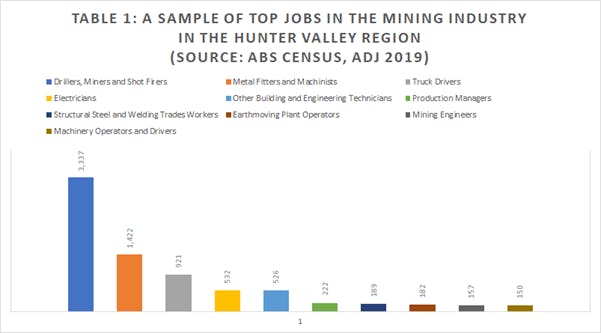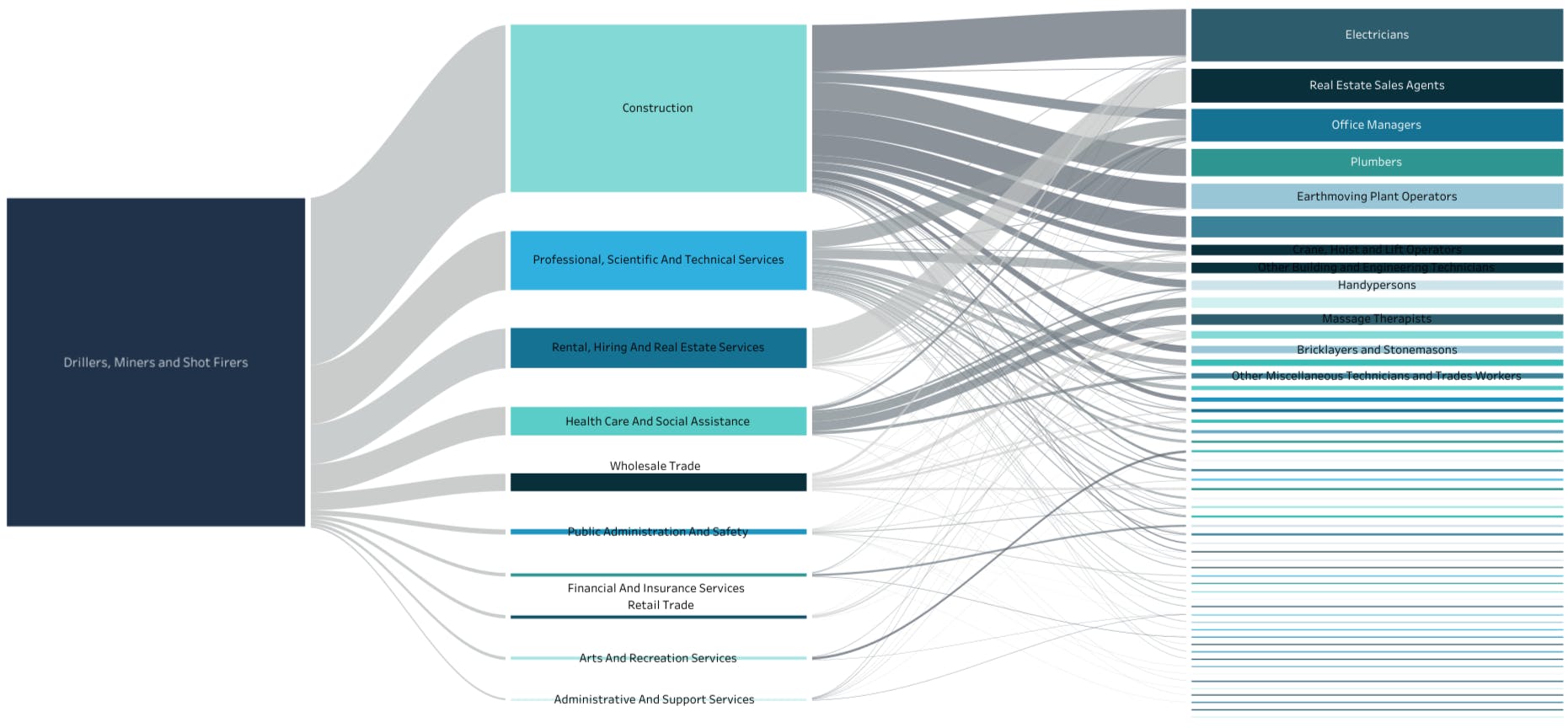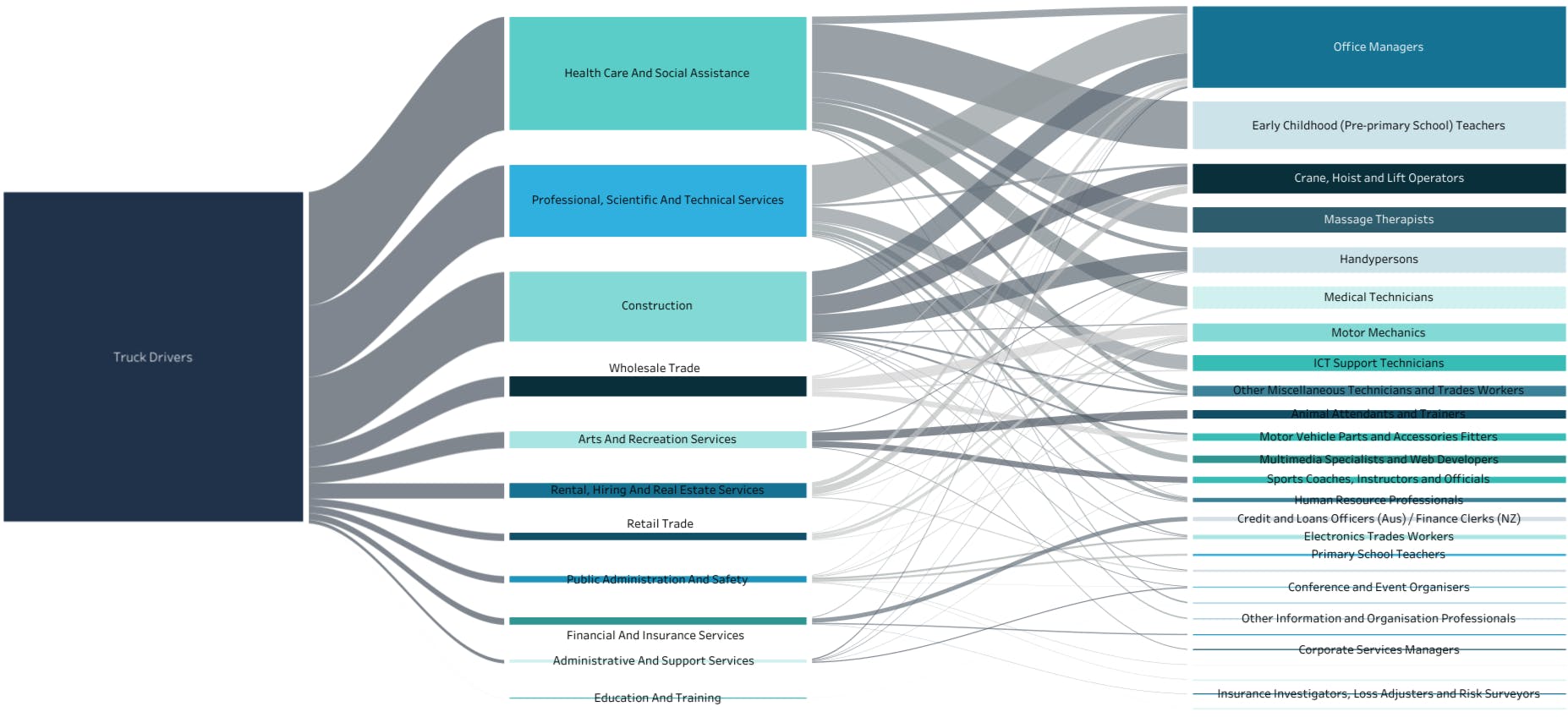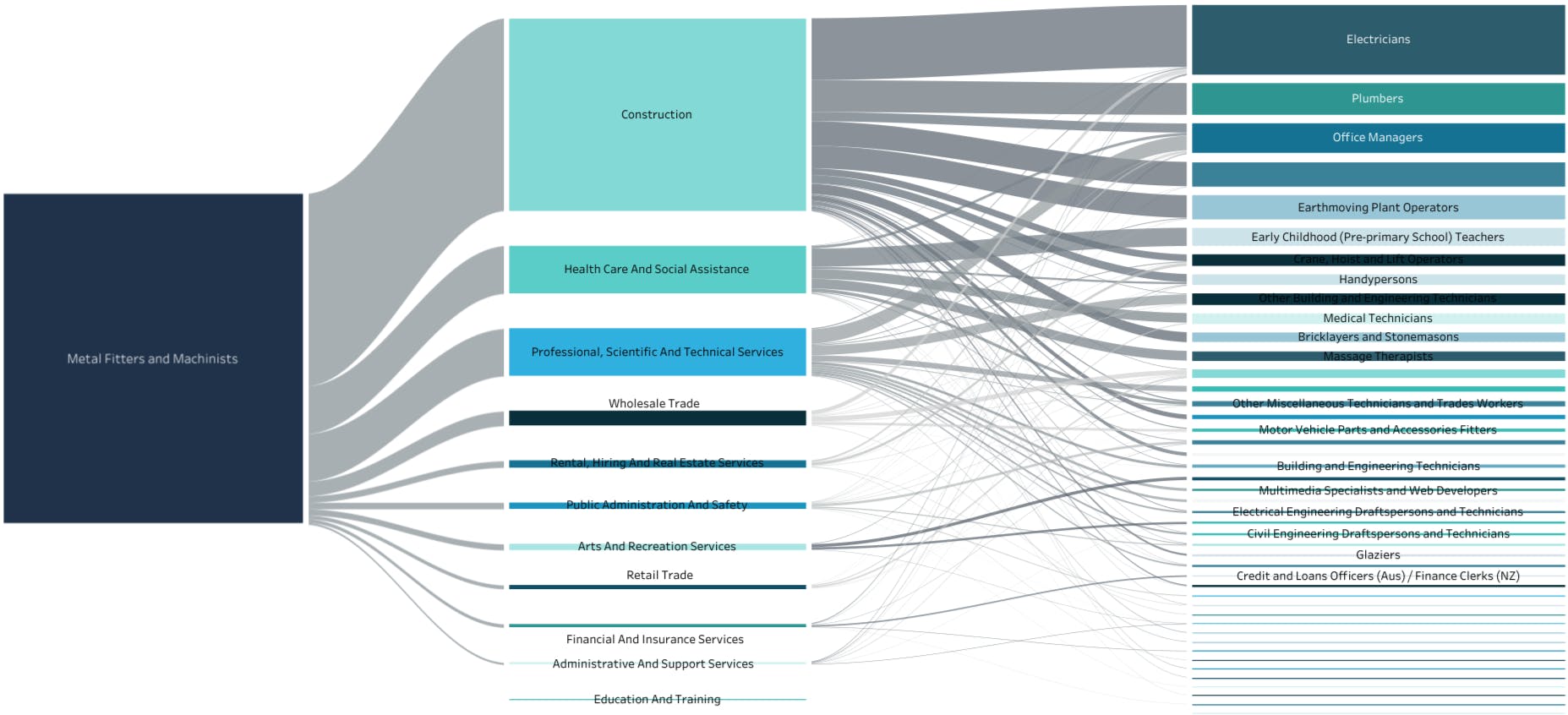Why does automation matter to the future of work? Economics tells us that automation is what drives...
Series: No-one left behind - The canary in the coal mine: a workforce transition plan for coal miners
By Dr Michael Kollo, Chief Economist
The coal mining industry faces an uncertain future. Australia is the world’s second-largest exporter of thermal coal, exporting $22.7 billion worth in 2019. Despite this success, the industry is experiencing enormous disruption. Shifting global demand, the technological transformation of the industry, investor behaviour and international emissions policies have wide-ranging ramifications. Redeployment, restructures and job losses are the resulting impacts on the workforce.
Coal mining is a specialised industry with well-paid jobs and highly skilled professionals, often with strong legacy ties to the industry. There are few viable career pathways in and beyond the coal mining industry for these highly skilled workers. Their unique skills and capabilities aren’t easily transferable and as a result, reskilling and redeployment can be costly.
Impacts are also felt by local economies in coal mining regions, which are buoyed by the discretionary spending of the large mining workforce. The coal mining industry is often central to rural communities and entire areas of emerging economies. It’s decline leaves hollowed out towns, slowly sinking local businesses and the social impacts of structurally unemployed miners. This paints a gloomy picture of potential future impacts of the decline of the coal mining industry.
The final, and somewhat unexpected problem, is one of positive recruitment for coal mining jobs while the industry still operates. It’s a critical issue for younger demographics looking to enter the mining workforce as they complete training and apprenticeships. Without long-term career prospects in mining, these skilled workers will look elsewhere for secure, well-paid job opportunities, accelerating the demise of an industry that is already on unsteady ground.
These are complex problems but not without sustainable solutions. A clear articulation of job transition pathways from mining into other industries will empower, engage and give hope to a coal mining workforce experiencing job insecurity. To target support and reskilling efforts most effectively, workforce planning needs a wholistic and collaborative approach across agencies and should be informed by clear, detailed data and analysis.
Any data-led analysis for solving this problem must address the following points:
- Future Economic Scenarios: Workers in the coal mining industry need job transition planning and options, ideally five to ten years in advance of a significant industry decline. It’s important to understand future economic scenarios that could unfold over that time period and send workforce demand in very different directions. This is particularly true after COVID-19, as economic forecasting is uncertain.
- Impacts of Emerging Technologies: AI and automation are increasingly transforming jobs and industries. One example is the roll-out of autonomous haul trucks in the Hunter, decreasing the demand for truck drivers. Reskilling efforts must prepare the coal mining workforce for jobs in industries that are less likely to be impacted by automation.
Our purpose in this piece is to demonstrate an example of how detailed geographic data and targeted workforce modelling can inform the transition planning of the coal mining industry, while accounting for the uncertainty of future economic scenarios.
An analysis of NSW coal workers
Our goal is to showcase our model using information about the coal mining industry in the Hunter region of NSW, known for its high quality coal. According to census data, there are approximately 82 different types of mining jobs in the Hunter region. The coal industry employs 9,300 workers, and over 80% of these workers are employed as drillers, miners, metal fitters, machinists and truck drivers.
Each of these jobs requires a different skillset and knowledge, and each presents different challenges for transitioning to other similar jobs. For illustrative purposes, let’s take a look at the top combined jobs of Drillers, Miners and Shot Firers, which employ over 3,300 workers.

We use a basic economic scenario over the next decade based on:
- a continuation of industry specific trends within the Hunter Valley
- with adjustments for aggregate lower growth and industry trends that are consistent with an increased focus on climate change¹
After adding the impacts of AI and automation, the net effect between economic growth and automation provides the net demand for labour and for different jobs and industries in the coming decade - specifically within the Hunter Valley and nearby regions.
Finally, we quantitively identify those jobs that are similar in skills and knowledge to those in the coal mining industry. We use this model to identify jobs for which transitions are possible through a combination of targeted training and education, and which should be reasonably achievable for an individual with advanced planning². For example, even if a job has a high amount of future demand (e.g. data scientist), if it’s not similar to a miner's job (e.g. a mining truck driver) it won't feature as a job option for reskilling. Our model presents realistic, achievable job transitions for the mining workforce.
An example case (shown below) can be applied to any one of the 82 jobs in the coal industry. The transition flow map shows a range of industries and jobs that a specific person can consider. The transitions to those jobs will each require different targeted education and skills training. The results are location-specific, so in this case, the worker receives results specific to the Hunter Valley. The flow map also features jobs with growth of future demand, ensuring that when their training is completed, new workers will enter a fertile and growing job market with a high demand for their skills.



The analytics show the potential transitions first by the kinds of industries (in the middle section), and then the kinds of jobs within those industries (to the right). The size of the bars reflects a combination of desirable jobs that will be in high demand in ten years’ time, and the ability of miners to transition to those jobs based on their skills and experience. We’ve shown the top three jobs of the mining industry, within the context of a typical economic environment, as typical examples. The most likely job transitions are into the construction industry, where common skills can be leveraged. Some surprising transitions are revealed, such as jobs in the real estate industry³.
An interesting example is seen in truck driver job transitions. Not unsurprisingly, truck drivers in the mining industry can transition smoothly into the construction industry. What’s perhaps unexpected is a job transition into the Healthcare industry, a growing industry that’s also proving ideal for workers as diverse as teachers, office managers and handymen to transition into. These examples shatter traditional ideas about career pathways; they show that future jobs can be found in the most unexpected places. With broader expectations, workers can be open to exploring future careers in industries they may not have previously considered. This can also motivate them to reskill and upskill for a wider range of future job opportunities.
The coal mining industry includes many support jobs that are less specialised and so experience an easier transition into other industries. Jobs such as catering or accounting can be much less specialised, so their transition will involve changing the context within which, for example, an accountant operates. This will probably require some work experience in other industries, rather than changing the underlying skills that they deploy. These transitions primarily require other booming industries to be looking for their skillsets, rather than a significant shift in career or reskilling.
Paving the way forward
The industry’s uncertain future and its technological transformation aren’t that different to the challenges faced in the past. As emerging technologies change the way we work, the workforce evolves, transitioning their skills and experience to new jobs in changing and emerging industries.
The challenge of any such transition - whether that be caused by automation, AI or due to the effects of a diminishing industry like coal - is to inform impacted workers and proactively provide them with opportunities to redirect their careers towards different areas of the economy.
When dealing with an increasingly complex economy, with more options but also more uncertainty, a scalable and data-led analysis presents a powerful building block to a more comprehensive strategic transition plan for impacted workers. While the challenges and the tools of an AI-enabled society will become more complex and more sophisticated, the goal of our collective efforts remains the same: to ensure that, during transitions to new technologies and industries, no one is left behind.
Author
Dr Michael Kollo, Chief Economist
¹ Our model is able to adjust to industry-specific effects, as well as unique time-period specific events. This allows us to create customised economic scenarios based both on public forecasts from agencies like IMF, OECD and RBA, but also adjustments for thematic impacts like Global Warming. We are able to generate multiple economic scenarios to allow comparisons between them also.
² Our assumption here is that coal miners will want to retain their skills and expertise in their career progression where possible.
³ The transition into Real Estate involves training in customer service, customer psychology, negotiation and persuasion.



